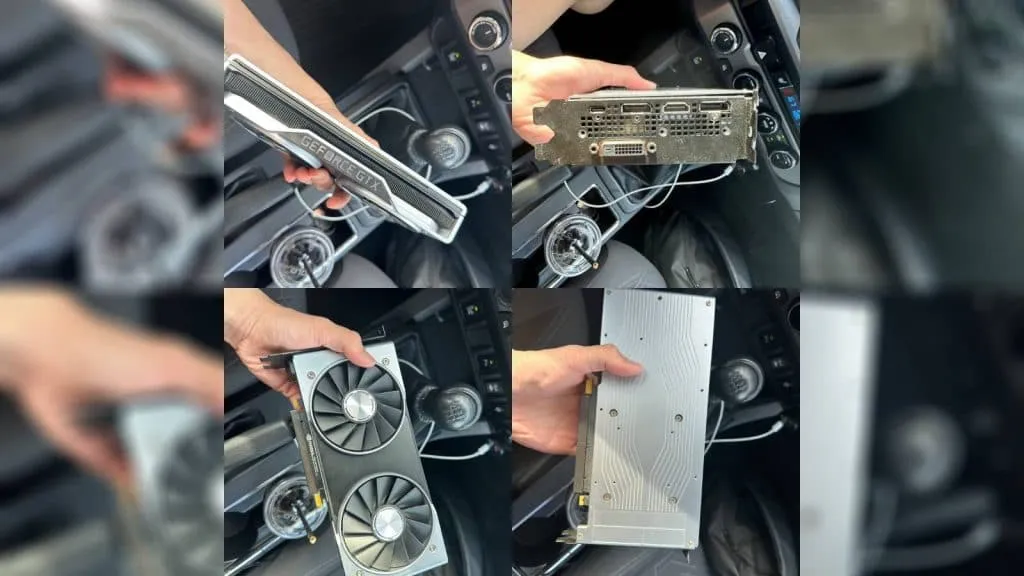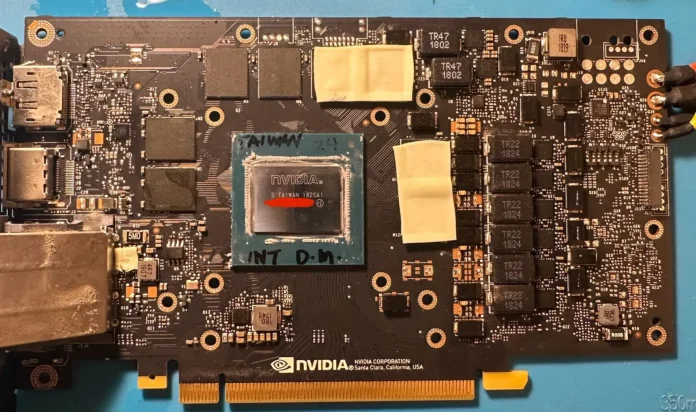The Nvidia GeForce RTX 2070, a name now etched into the annals of gaming history, once had a different identity and hidden potential. Back in its developmental phase, it bore the GTX prefix, hinting at a divergence from the eventual RTX branding. Recently, an unexpected revelation surfaced in the tech realm, shedding light on an alternate version of this iconic graphics card.
Jiancheng Liu, an enterprising engineer, took to Twitter to unveil a rare engineering sample of the Nvidia GeForce GTX 2070. This prototype, distinct from its successor, boasted a configuration that diverged from the final product. While visually akin to its RTX counterpart, the internals harbored notable disparities.

Unlike the GeForce RTX 2070’s 2,304 CUDA cores, the GTX 2070 prototype featured a slightly diminished count of 2,176 cores. Further inspection revealed that while both utilized the TU106-400A-A1 chip, the GTX variant housed two disabled SMs, altering its performance dynamics.
What sets this discovery apart is not just its historical significance but its implications for enthusiasts. By employing a daring maneuver, Liu successfully flashed the prototype’s vBIOS with the 400A BIOS from an RTX 2070. This unconventional tweak unleashed a higher power threshold, enabling overclocking capabilities previously unseen in the GTX lineage.
The result? A remarkable performance boost, nearing 95% of what the standard RTX 2070 achieves. This unexpected leap opens doors to speculation about Nvidia’s past strategies and potential avenues for future innovation.
However, amidst the excitement, questions linger. Was Nvidia toying with the idea of introducing budget-friendly GTX iterations alongside its RTX lineup? The absence of concrete answers fuels debate among PC gaming circles. With Nvidia discontinuing the GTX branding, the prospect of maintaining budget options remains tantalizing yet elusive.
As gamers navigate the evolving landscape of graphics technology, the emergence of the GTX 2070 prototype serves as a testament to the intricate interplay between innovation and legacy. While the mysteries of Nvidia’s past decisions may never fully unravel, one thing remains certain – the quest for technological excellence marches on, driven by curiosity and a relentless pursuit of progress.


